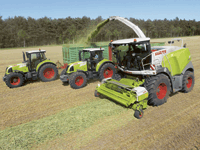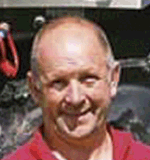Innovative inoculant saves time and money

Ultra Low Volume silage inoculant (ULV) was a concept which began in the USA about seven years ago and one that arrived in the UK a couple of years later. The idea is to reduce the volume of water required each day to apply the inoculants, hence increasing the number of acres harvested.
The application rate of a ULV product should be between 10ml and 50ml/t of grass. Creating a product suitably concentrated for it to be used in such low volumes was not straightforward; it’s not simply a matter of concentrating down existing products, as bacteria are held in suspension, not solution.
US-based Pioneer and French-owned Biotal were the first companies to introduce ULV additives and applicators to the UK market, albeit with 100,000/g products (it’s generally accepted that silage made in UK conditions requires 1m bacteria per gram of treated forage). UK additive manufacturer Ecosyl entered the market a year later with a million/g product, which it called Ecosyl ULV.

Hand in hand with the launch of Ecosyl ULV came an applicator – jointly developed with Claas – that was able to be retro-fitted to all makes of forage harvester and which could be ordered as a factory-fitted option when buying a Claas forager. The unit, the Actisyler, has its control system built into the forager’s electronics.
Suitable for all ULV products, the applicator uses a peristaltic pump to administer small doses of additive. The pump needs no priming – a roller sequentially compresses a flexible tube containing additive and forces it through.
Operators assess how much forage is passing through their machine and use a simple dial to adjust the applicator’s pump to apply the required volume of additive.
The additive is delivered to the forager’s outlet chute. At this point there is a lot of grass movement helped by a 130mph wind speed. Such is the degree of turbulence, the Ecosyler is able to deliver the additive through a relatively large diameter hole, rather than a small spray nozzle, which could easily block.
Normal, non-ULV additives are applied at between 1 and 2.5 litres/t of grass, a volume that needs a couple of barrels of water to enable a high-capacity forage harvester to keep going for any length of time between water refills.
The 20-litre hopper on the Ecosyler has sufficient capacity to treat 1000t of forage – one bottle of Ecosyl ULV treats 100t – and it applies 1m bacteria per gram of grass.
Case study, Paul Eccleston, St Martins, Oswestry
Shropshire contractor Paul Eccleston began using a ULV additive last year having fitted out his new Class Jaguar 950 with an Ecosyler applicator.

“After years of having to stop during the course of a day to refill water tanks, it was a joy to be able to just keep going,” he says. “On some long runs we can have a have a team of up to 14 tractors and trailers taking grass back to the clamp. Stop the forager for just 15 minutes and you can soon have a lot of men and machines standing about not doing a lot.”
Mr Eccleston offers his forage harvesting service to customers within a 20-mile radius of his base at St Martins, Oswestry. The service also includes whole-crop and forage maize harvesting.
“I would estimate that not having to stop for any appreciable time to fill up allows us to harvest about another 10 acres a day,” he says. “Which, during a season, can make quite a difference.”
The applicator cost about £700 to buy and fit and, with the extra output it allows, he thinks it is money well spent. There is no extra charge to customers for applying additive although, of course, they pay for the product used.
“I still carry a barrel of water on the forager, but that is so I can just add the two litres required to mix a bottle up of the Ecosyl ULV, which takes but a minute to complete,” he says.

